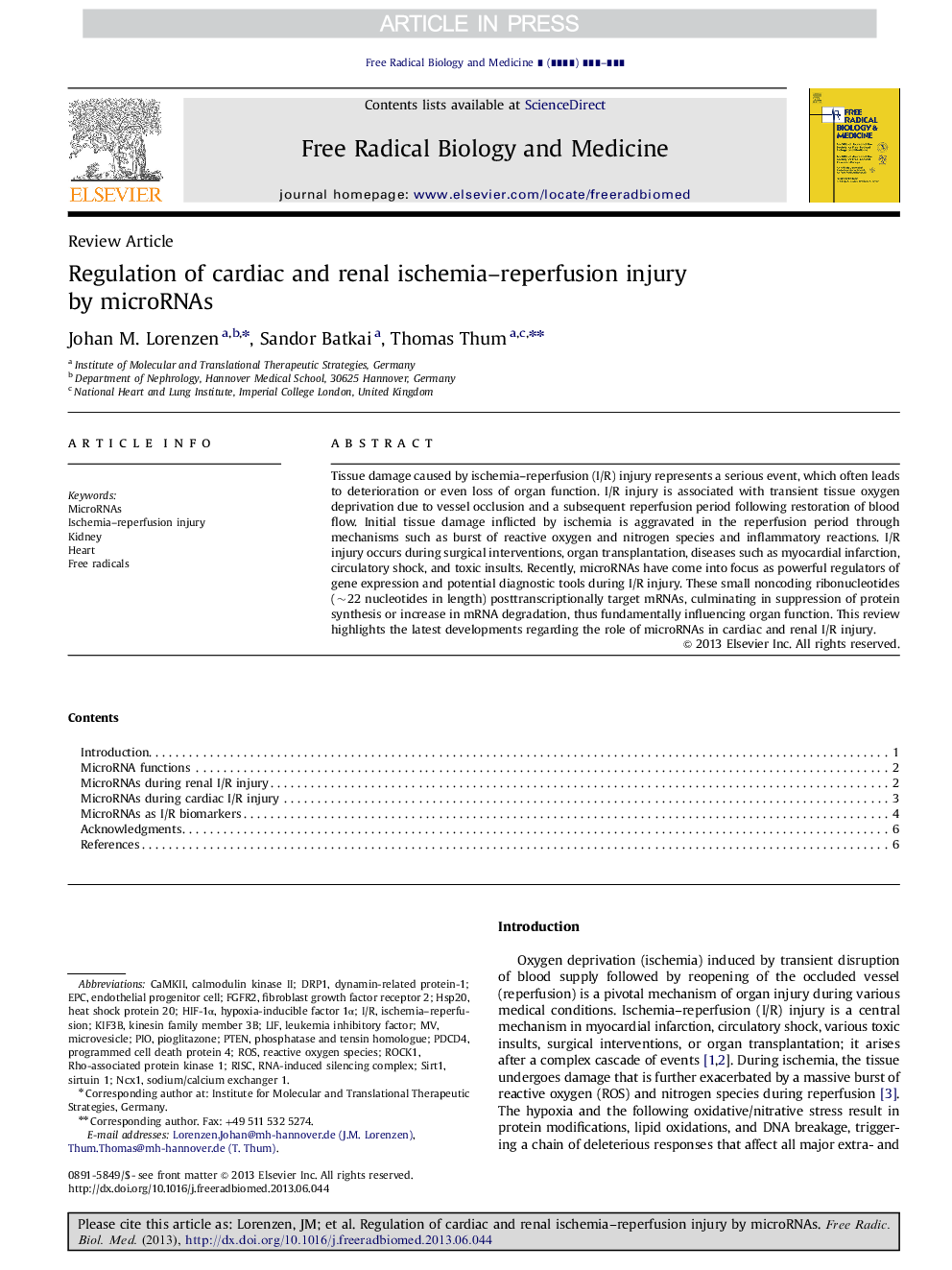| Article ID | Journal | Published Year | Pages | File Type |
|---|---|---|---|---|
| 8270826 | Free Radical Biology and Medicine | 2013 | 7 Pages |
Abstract
Tissue damage caused by ischemia-reperfusion (I/R) injury represents a serious event, which often leads to deterioration or even loss of organ function. I/R injury is associated with transient tissue oxygen deprivation due to vessel occlusion and a subsequent reperfusion period following restoration of blood flow. Initial tissue damage inflicted by ischemia is aggravated in the reperfusion period through mechanisms such as burst of reactive oxygen and nitrogen species and inflammatory reactions. I/R injury occurs during surgical interventions, organ transplantation, diseases such as myocardial infarction, circulatory shock, and toxic insults. Recently, microRNAs have come into focus as powerful regulators of gene expression and potential diagnostic tools during I/R injury. These small noncoding ribonucleotides (~22 nucleotides in length) posttranscriptionally target mRNAs, culminating in suppression of protein synthesis or increase in mRNA degradation, thus fundamentally influencing organ function. This review highlights the latest developments regarding the role of microRNAs in cardiac and renal I/R injury.
Keywords
HIF-1αFGFR2sirtuin 1Sirt1PDCD4microvesicleDrp1ROCK1CaMKIINCX1HSP20LIFEPCI/RpIOROSIschemia–reperfusion injuryischemia–reperfusionRISCFree radicalsmicroRNAsEndothelial progenitor cellhypoxia-inducible factor 1αleukemia inhibitory factorHeartRNA-Induced Silencing ComplexPhosphatase and tensin homologuedynamin-related protein-1programmed cell death protein 4Ptencalmodulin kinase IIKidneyPioglitazoneReactive oxygen speciesfibroblast growth factor receptor 2
Related Topics
Life Sciences
Biochemistry, Genetics and Molecular Biology
Ageing
Authors
Johan M. Lorenzen, Sandor Batkai, Thomas Thum,
